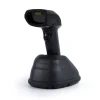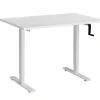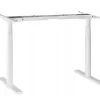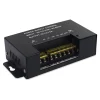Help Center: Measuring Instruments
What are measuring instruments?
Measuring instruments are various tools that allow for the measurement of distance, calculation of area and volume of spaces, and determination of verticals, levels, or angles. Among these types of accessories, we can distinguish laser distance meters and cross line lasers. Equipment from this category is ideally suited for use in the renovation and finishing industry.
What is a distance meter?
A laser distance meter is a simple and precise device designed to measure the distance between objects. It provides accurate and precise measurement. It emits a beam of light in the form of a laser, in green or red, measuring via a mechanism and displaying the result on a screen.
What is a cross line laser?
A cross line laser is a versatile and advanced device designed to determine levels, verticals, and angles. It emits several laser beams and provides high measurement precision. A sensor helps to easily level the equipment relative to the ground, which triggers an alarm if a deviation of 3 degrees is detected. Cross line lasers often offer the possibility of adjustment in a wide range and can be mounted almost anywhere with mounting brackets.
What are the laser classes?
The human eye is several times more sensitive to green light than, for example, red. For this reason, laser devices with a wavelength of 535 nm will be more visible to the human eye than lasers with a wavelength of 650 nm, despite having the same power. The sensitivity chart for wavelength can be applied not only to the eye but also to all biological tissues. For this reason, the PN-EN 60825-1:2014-11 standard was established, in which safety rules and the division of laser devices into seven classes were determined: 1 – lasers that are safe under rational working conditions, 1M – lasers emitting radiation in the wavelength range from 302.5 to 4000 nm, which are safe under rational working conditions but can be dangerous when looking at the beam through optical instruments, 2 – lasers emitting visible radiation in the wavelength range from 400 to 700 nm. Eye protection is naturally provided by instinctive defensive reactions, 2M – lasers emitting visible radiation in the wavelength range from 400 to 700 nm. Eye protection is naturally provided by instinctive defensive reactions, but they can be dangerous when looking at the beam through optical instruments, 3R – lasers emitting radiation in the wavelength range from 302.5 nm to 1 mm, for which direct looking into the beam is potentially dangerous, 3B – lasers that are dangerous during direct exposure to radiation. Looking at scattered reflections is usually safe, 4 – lasers that produce dangerous scattered reflections. They can cause skin damage and pose a fire hazard. Special caution must be exercised when operating class 4 lasers. As can be seen, higher class laser devices can create very dangerous situations that threaten health and life if handled carelessly. Every device using laser technology should have the appropriate laser class marking, which along with a pictogram will be drawn in black on a yellow background.
What features can a laser distance meter have?
A laser distance meter offers a range of useful features that significantly facilitate work. Measurement can be done in three different units: meters, feet, and inches. Additionally, the device allows you to program whether the measurement should start from the bottom or top of the device, providing greater flexibility. A major advantage of the meter is the built-in memory, allowing up to 20 of the last measurement results to be saved. Once the memory is full, current measurements overwrite the oldest values, eliminating the need to monitor and manually delete data, thus saving time. The device allows replacing various measuring tools with one, which enhances convenience and saves space. In addition to measuring the distance between objects, the device offers logical functions that allow for the automatic calculation of the area and volume of a room based on the entered measurement values. The use of the Pythagorean theorem is also noteworthy, as it enables the calculation of height based on the lengths of two sides of a triangle. The distance meter serves not only measurement functions but also computational ones, allowing for the addition and subtraction of measured values. Additionally, the activation of continuous distance measurement, displaying the minimum and maximum measured values, may also be helpful. If necessary, the laser lines can be used for leveling, thus replacing a traditional spirit level.










